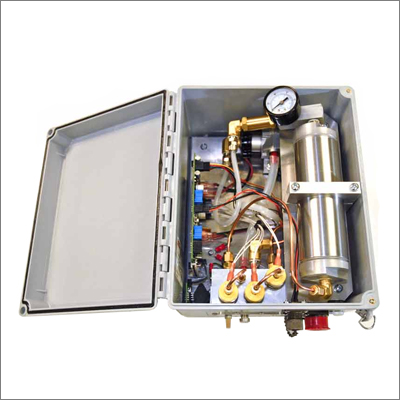Supported Sensors
Hydromagic Dredging depends on sensors to get position information for angles of dredging equipment (excavator boom, stick and bucket or suction tube) and the motions of the pontoon or vessel (roll, pitch and dynamic draft). To get this information into the software, sensors have to be used, which are configured using plugins.
This document explains the differences between different sensor types, The following types of sensors are supported in Hydromagic Dredging:
- Pressure sensors;
- Bubbler sensors;
- Inclinometer sensors;
- Rotary sensors;
- Motion sensors.
If you are looking for a list of supported sensor brands and models, please have a look at the "Supported sensor brands and models" list.
Pressure Sensors
Pressure sensors use the atmospheric pressure of the water column to calculate the depth under the water surface. This type of sensor can be used for cutter and suction dredges. Since they only work under water, they are not suitable for use on excavators. A pressure sensor may be used as a sensor to determine the vessel's draft for higher precision (this is especially true for hopper dredgers).
Pressure sensors are mounted on the suction tube to determine the dredging depth. To obtain dynamic draft, an additional pressure sensor has to be mounted to the vessel's hull. Pressure sensors need to be calibrated by entering the local air pressure. Also relative pressure sensors are available which measure the air pressure by a separate tube (inside the electric cable).
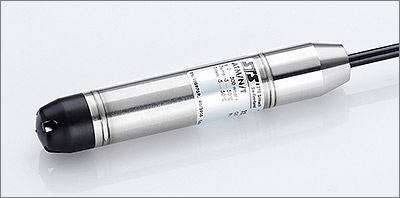
Example of a pressure sensor (image courtesy AE Sensors NL).
Bubbler Sensors
A bubbler sensor measures the water depth by measuring the amount of pressure it takes to push an air bubble out the device. This type of sensor can be used for cutter and suction dredges. Since they only work under water, they are not suitable for use on excavators. A pressure sensor may be used as a sensor to determine the vessel's draft for higher precision (this is especially true for hopper dredgers).
When using a bubbler sensor, only the tubes are mounted to the suction tube. The device generating the bubbles will be on the vessel.
Inclinometer Sensors
An inclinometer sensor measures an angle rather than a depth. Since this type of sensor uses gravity to measure the angle, it can be used both under and above the water surface, making this sensor suitable for all types of dredgers including excavators. When the length of the suction tube or ladder is known, the measured angle can be used to calculate the depth at the end of the tube.
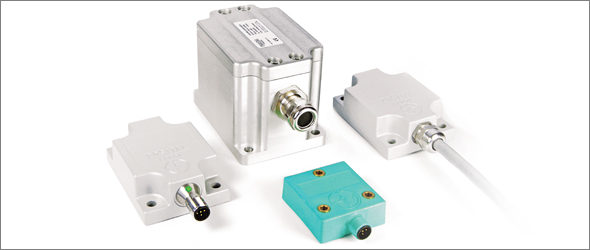
Example of a inclinometer sensor (image courtesy Posital Fraba).
Rotary Sensors
A rotary sensor measures angles, just like an inclinometer. The difference is that the rotary sensor is used to measure horizontal angles whereas the inclino sensor measures vertical angles. The rotary sensors uses light or a potentiometer instead of gravity to measure an angle. This sensor is only required when you want to measure the horizontal 'swing' of a suction tube, or to measure the yaw of an excavator (although we recommend installing a second RTK heading system on the excavator since it is much more durable and accurate).
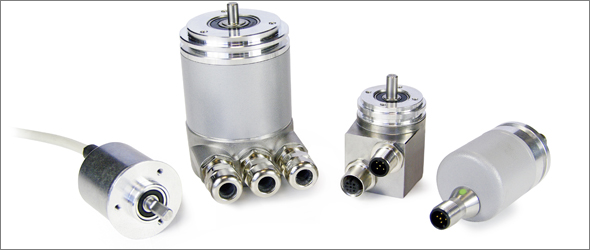
Example of a motion sensor (image courtesy Posital Fraba).
Motion Sensors
A motion sensor can be added to correct for roll and pitch motions of the vessel. We recommend to always add this type of sensor to hopper dredgers because the varying load of material in the hopper(s). A motion sensor is basically the same as two inclinometers.
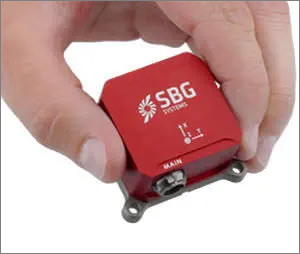
Example of a rotary sensor (image courtesy SBG Systems).

